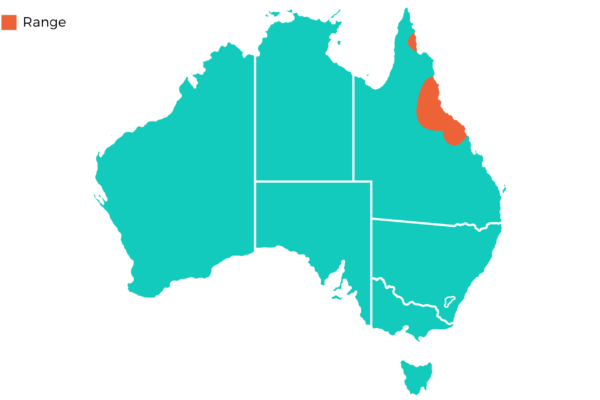Description
The Southern Cassowary is one of the largest flightless birds in the world. The feathers of the body are black and hair-like. The bare skin of the head and fore-neck is blue, while the rear of the neck is red. Both sexes are similar in appearance, but the female is generally larger than the male, with a taller casque, and is brighter in colour. Young Cassowaries are browner than adults, and have duller coloured head and neck. The chicks are striped yellow and black. If a Cassowary is approached it will generally stand its ground. If the intruder approaches too close, the bird will stretch itself as tall as possible, ruffle its feathers and let at a loud hiss in an attempt to scare the intruder off. The birds are equipped with quite dangerous claws, and will readily attack a persistent intruder, although they usually retreat into the dense rainforest.
Distribution
Southern Cassowaries are found in northern Queensland.

Lifespan
The average lifespan of a Cassowary in captivity is up to 60 years but significantly less out in the wild.
Size
1.5 - 2mtrs in heigh and 50 - 70kgs in weight.
Diet
The Southern Cassowary feeds mostly on fruit that has fallen to the ground. The Southern Cassowary will also eat anything from snails and fungi to small dead mammals.
Habitat
Rainforests. The dense habitat and the Cassowary’s secretive nature make individuals difficult to see. In certain areas, birds come near human habitation seeking food. Throughout their range, Southern Cassowaries live alone and inhabit the same area all year round.
Breeding
The breeding season is between June - October. The female Southern Cassowary selects a male to breed with and then lays a clutch of 1 - 4 large green eggs in a scrape in the ground lined with plant material. Once the eggs are laid, the male is left in charge of the incubation and chick-rearing duties, while the female moves away, and may even breed again with another male. During the breeding season, the parental males are very aggressive.
鹤鸵/食火鸡 | ヒクイドリ | 화식조